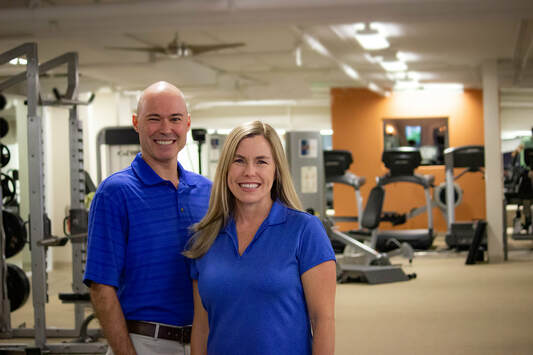|
For many of us, exercise is more than a general walk in the park. In reality, it’s a part of who we are, and our dedication to training programs, fitness, and health, goes above and beyond. From running, to swimming, to CrossFit, and to hiking, we just love to do it. Every day we push ourselves harder – we run faster, swim further, and lift more. Yet while our daily habits may seem outwardly healthy, we may actually be doing ourselves harm in the long run. Why? Well, for some of us the exercise routines we’ve come to love have turned from ‘healthy’ to ‘unbalanced’. In other words, as we’ve pushed ourselves on the court, in the pool, or on the bike, we’ve lost track of our personal limits - we’ve fallen prey to what is generally called Overuse Training Syndrome. Now, if the name intimidates you, don’t fear. In this post, we discuss the causes and effects of OTS and we give you advice on how to get back in the right gear.
0 Comments
The sudden pain you’ve experienced in the back of your heel during or after your morning run, workout, or squat has a name… Achilles Tendonitis. And though it’s a mouthful to pronounce, its symptoms and aftermath are more common. In this post, we look at the effects and causes of this uncomfortable, oftentimes painful affliction, and we give you the tools to overcome its debilitating effects on your exercise routine and lifestyle.
Back pain: very few people go through life without feeling its debilitating effects. From dull aches to sharp, stabbing sensations, back pain can afflict many of us in various ways. For a some people, back pain is a prolonged struggle that can strike at any moment, the intensity and heartache of which seems to increase over time if left untreated. For others, however, back pain seems to appear later on in life, and the predominant assumption is that it is therefore age related. Here’s the thing, though: it isn’t necessarily true. Yes, that’s right. Back pain – especially when you’re older – actually has very little to do with your age and a lot more to do with your lifestyle. In this post we look at why we often mistake middle-age back pain for something “normal” or “natural”, and we discuss some of the ways in which you can overcome the pain and get back to the active, mobile lifestyle you deserve [...]
If you generally step more gently as you go down the stairs, hold the hand-railing a little bit tighter, and take careful note of where your feet land next… you’re not alone. The vast majority of us either consciously or subconsciously fear the sudden jolt and feeling of vertigo related to feeling taking a tumble – not to mention the pain that comes afterwards! Our worst fears are realized when we start to think about the horrendous consequences of a fall: hip-fractures, muscle tears, back pain, even broken legs all come to mind. Yikes! Is it any wonder that a common nightmarish theme is falling out of bed? In fact, a fear of falling is so common that most people don’t even know they’re afraid! That’s right – the fear isn’t consciously spoken about or acknowledged, rather it translates into minute, prolonged posture and gait abnormalities which, if left unnoticed, can wreak havoc on one’s mobility and self-confidence. That’s why this post looks at why most people are secretly afraid of falling, why most don’t even know they’re afraid, and – thankfully – what we can do about tackling this problem. [...]
We’ve all been there… our hands clutching at our thighs in the hope of relieving hip-stress as we get up or sit down; a grimace on our faces as we try to grapple with what we think are signs of aging while easing into the bath; a frown as we get out of the car, straining to carry the weight in our legs, not our hips. Hip pain: most of us have experienced it, and if you’re reading this, you’re probably still suffering from its tell-tail discomfort. And yet, for most of you reading this, your pain isn’t related to any sort of injury you can think of – it just arrived and has decided to stay. The good news is, though its origins are unknown, hip-pain can be treated and alleviated. In this post, we’re looking at some of the reasons you might be suffering from hip discomfort – and better still – some of the ways in which you can become pain free, right now. [....]
Neck pain and upper back pain may be two of the most common ailments people experience. From struggling to move your neck, to worrying about the position you sit in on your favorite sofa, pain in the upper torso is debilitating. Yet, many of those who experience these kinds of issues haven’t suffered a fall, twisted their necks unnaturally, or been on rollercoasters since their pain started. For most people, the cause of neck pain or upper back discomfort can’t be pinpointed: there is no single unique moment in which their backs or necks could have been injured. What then? How did they come to be in so much pain? And if you’re reading this, you’re probably thinking the same thing about yourself. Fear not, however, because we’re here to help. In this post, we’ll be investigating the hidden causes that have led to your neck and upper back pain. We’ll also be looking at what to do about it and which steps to take next. [...]
|
Authors: Bryan & Jennifer Regar"We Help People Be More Active, Healthy, And Live Pain Free Without Relying On Medications, Injections, Or Surgeries. Archives
July 2020
All
|


 RSS Feed
RSS Feed